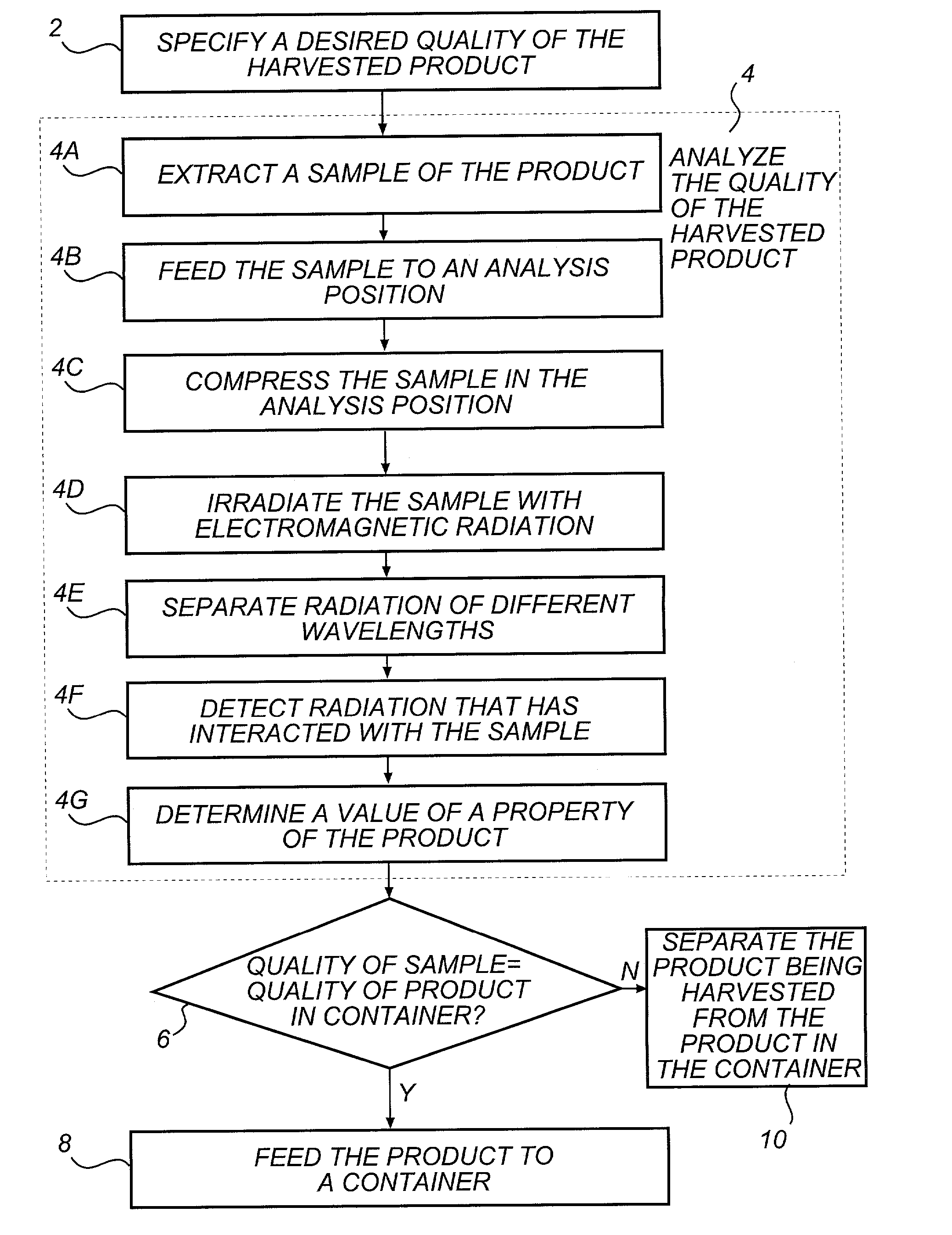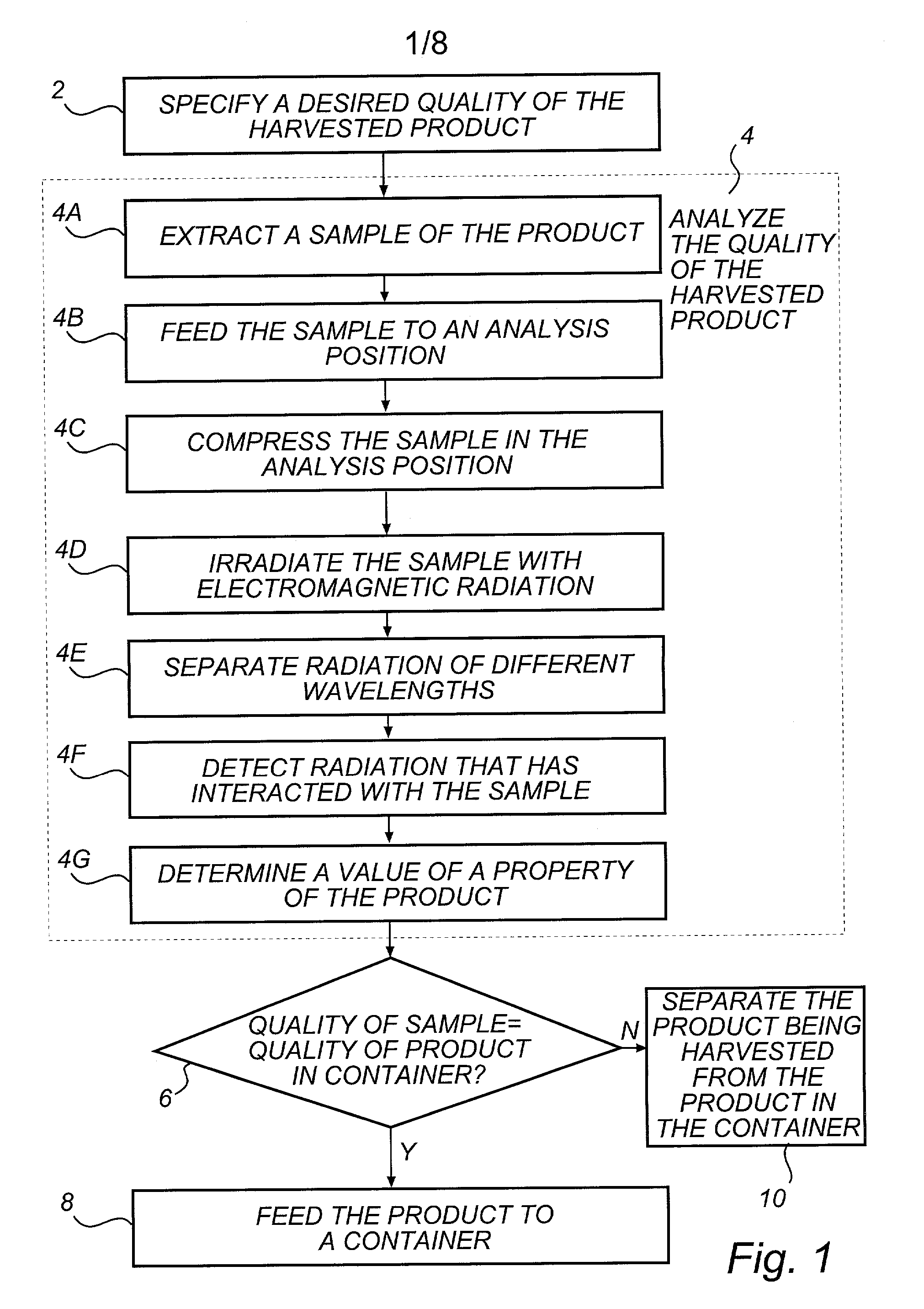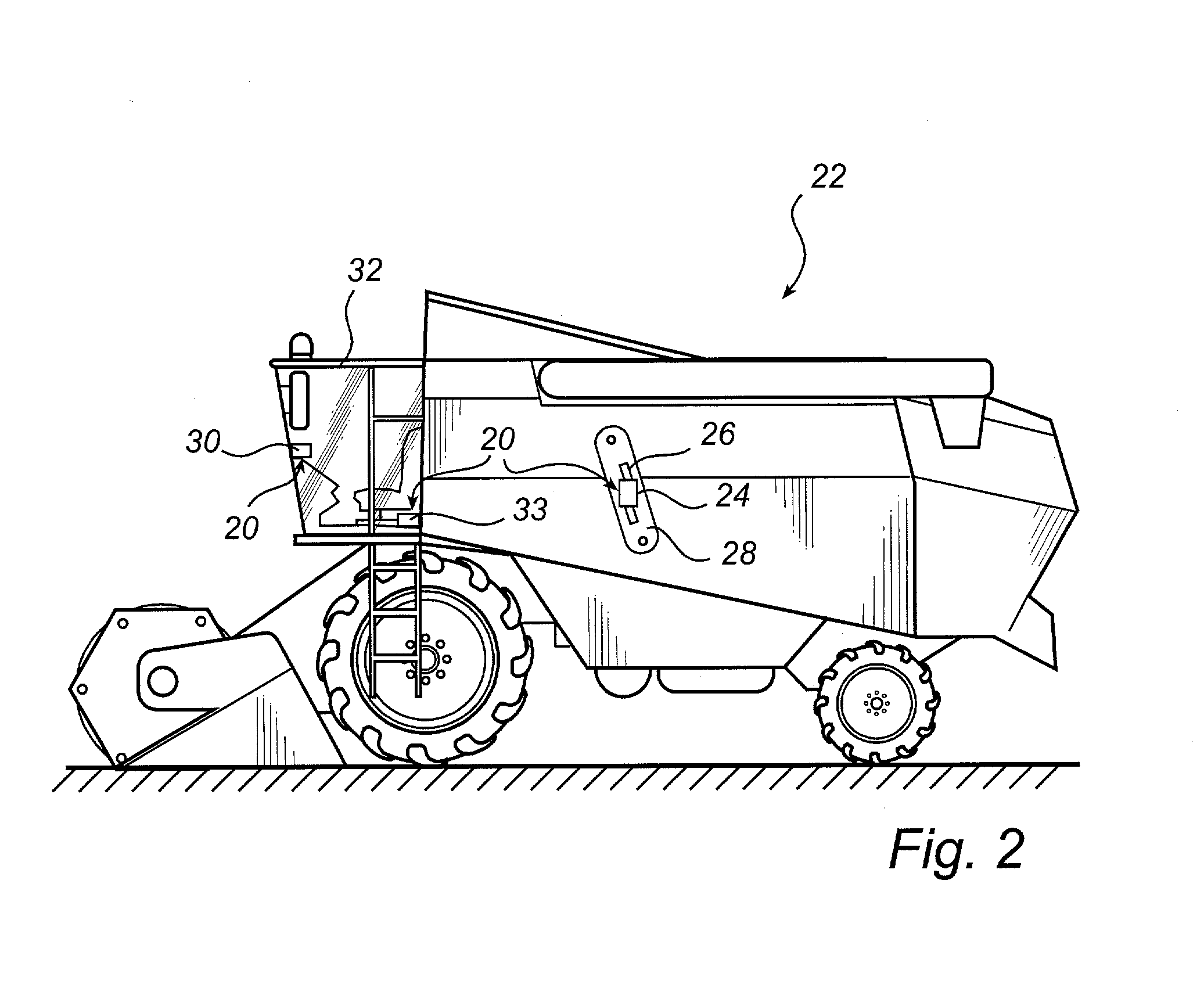Sorting grain during harvesting
a technology of grain and harvesting, applied in the field of sorting grain during harvesting, can solve the problems of inaccurate information, long time until the farmer gets a better quality of his grain, and difficulty in correctly determining the protein content of the produ
- Summary
- Abstract
- Description
- Claims
- Application Information
AI Technical Summary
Benefits of technology
Problems solved by technology
Method used
Image
Examples
first embodiment
[0092] Referring to FIGS. 5-10, different embodiments of the sample holder 34 will be described. In FIG. 5, the sample holder 70 is shown. The outlet 72 can be closed by means of an outlet shutter 74. The outlet shutter 74 shuts the flow of products from the shaft 75. The inlet can be closed by means of an inlet shutter 76. The inlet shutter shuts the flow of products to the shaft 75. Thus, a product sample 77 can be fixated during measurement. The outlet shutter 74 is opened to remove a product sample 77 from the shaft 75. Then, the outlet shutter is closed and the inlet shutter 76 could be opened to feed a new sample 77 into the sample holder 70. The inlet shutter 76 could also be held closed for obtaining a reference spectrum on an empty shaft 75. The source head 78 is provided inside the shaft 75. A motor 79 controls how much the source head 78 is inserted into the shaft 75 for adjusting the sample thickness that is being measured upon. Alternatively, the source head 78 is fixed...
second embodiment
[0093] In FIGS. 6-7, the sample holder 80 is shown. In this embodiment, the shaft comprises a rotatable brush wheel 82. The wheel 82 rotates around a rotational axis that is perpendicular to the flow of products in the inlet 84 and the outlet 86. The brush wheel 82 comprises paddles 88 that extend radially from the rotational axis. Two adjacent paddles 88 form a sector 90, which is a cavity for holding the sample. The brush wheel 82 is divided into several sectors 90. The rotation of the brush wheel 82 is performed stepwise from a first position 92, where a sector 90 is filled by a product sample from the inlet 84, to a second position 94, where the sample is irradiated and analyzed, and further to a third position 96, where the sector 90 is emptied. When the brush wheel 82 is rotated, the sectors 90 are filled continuously for acquiring new samples for analysis. By turning the direction of rotation of the brush wheel 82, an empty sector 90 could be presented to the second position ...
third embodiment
[0099] However, in the sample holder 100, the brush wheel 102 is arranged to rotate around a rotational axis parallel to the direction of the flow of particles in the inlet 110 and the outlet 122. As a result, the sample holder 100 could comprise a cleaner (not shown) for effectively emptying the sectors 106 at the outlet 122. The cleaner could be realized as a piston, which is pushed through the sector 106 in the third position 114. This implies that the sectors 106 could be completely emptied, even for moist samples.
PUM
| Property | Measurement | Unit |
|---|---|---|
| wavelengths | aaaaa | aaaaa |
| electromagnetic radiation | aaaaa | aaaaa |
| distance | aaaaa | aaaaa |
Abstract
Description
Claims
Application Information
 Login to View More
Login to View More - R&D
- Intellectual Property
- Life Sciences
- Materials
- Tech Scout
- Unparalleled Data Quality
- Higher Quality Content
- 60% Fewer Hallucinations
Browse by: Latest US Patents, China's latest patents, Technical Efficacy Thesaurus, Application Domain, Technology Topic, Popular Technical Reports.
© 2025 PatSnap. All rights reserved.Legal|Privacy policy|Modern Slavery Act Transparency Statement|Sitemap|About US| Contact US: help@patsnap.com



